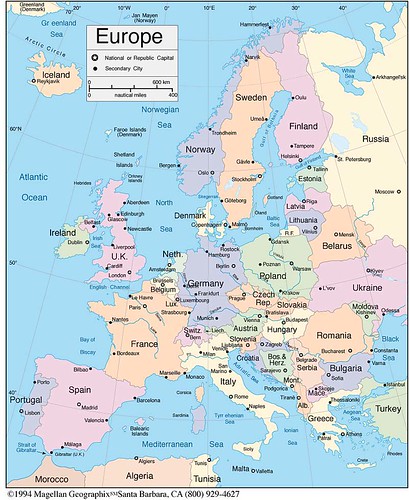
Euros:
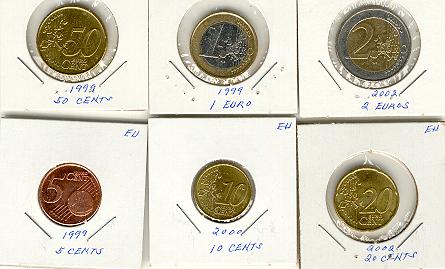
As of this writing there are 25 member states in the European Union (EU) and here is a chronology of when each became a member:
1958: Belgium, France, Germany, Italy, Luxembourg, The Netherlands
1973: Denmark, Ireland, United Kingdom
1981: Greece
1986: Portugal, Spain
1995: Austria, Finland, Sweden
2004: The Czech Republic, Cyprus, Estonia, Hungary, Latvia, Lithuania, Malta, Poland, Slovakia, Slovenia
Possible member candidates:
Croatia, Macedonia, and Turkey
Other Potential Member states:
The remaining states in the Balkans (Albania, Bosnia and Herzegovina, Montenegro and Serbia, including Kosovo)
Those who failed to join or left:
Norway, Greenland, Morocco, and Switzerland.
Other Future Prospects:
Armenia, Cape Verde, Georgia, Iceland, Moldova , and Ukraine
And include the European Microstates:
Liechtenstein, Monaco, and Vatican City
And More:
Macaronesia Region composed of Cape Verde(named above), Azores and Madeira, and Spanish Canary Islands; then, Azerbaijan, Faroe Islands, Iceland, and San Marino.
However, there are only 12 member countries using the EU currency, the euro:
Austria, Belgium, Finland, France, Germany, Greece, Ireland, Italy, Luxembourg, the Netherlands, Portugal and Spain.(Coins and notes were released only on 1 January 2002.)
But the following non-members also use the euro currency: Andorra, the Holy See, Monaco and San Marino.
A little background on currency value:
Once upon a time not so long ago in a land not so far away, the Swiss franc was the strongest currency in the world. Outside of gold, it was the premier currency in which to seek a safe haven from periodic world monetary turmoil. It still is, but with a much reduced appeal with the advent of the euro.
Germany is Switzerland's major trading partner, and consequently maintained a narrow fluctuating trading band with the German mark, also a relatively strong paper with the Weimar experience still fresh in the minds of many Germans. With the mark being amalgamated into the euro and its sovereign monetary policy now determined by the ECB, the Swiss franc's value is now reflective of the far more socialist monetary policies of the other members in the ECB. It's a sorta mini-wealth transfer within Europe. If Britain has ever done anything right for its people it is to have refrained from joining the giant wealth transfer scheme inherent in the ECB. Norway and France are a couple of others getting cold feet about this whole regional government
So now, here is the US dollar conversion of the three-named currencies, except that the Deutsche mark is now obsolete because Germany now uses the euro:
One Euro = 1.25140 US$
One Swiss Franc = 0.800839 US$
One Deutsche Mark (obsolete) = 0.639789 US$
In effect, the 12 member states, including the 4 little states mentioned above, in adopting the euro have effectively demonetized their own unique currencies and made them obsolete. And thus put them squarely on the lap of the eager numismatists. These frozen-in-time gems will now command a lot of interest and value to those eager to memorialize them.
Given these developments, I was then quite exhilarated when I came in possession of a collection that was recently discarded by a homeowner who had to sell his house and move elsewhere. Heartened by receipt of a box-full, bigger than your typical shoebox, of coins from all over the world, but dominated by those coming from member states of the EU.
Here are some of the obsolete coins which have been replaced by the euro. The latter (pictured above) might disappoint coin enthusiasts, given the rather unimpressive quality and look of the coins and the metals used. Especially when compared with the older discarded coins of the member states.
Germany:
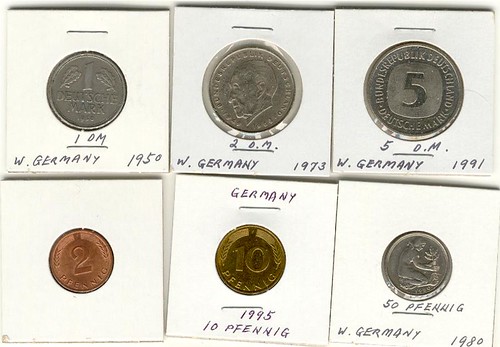
Netherlands:
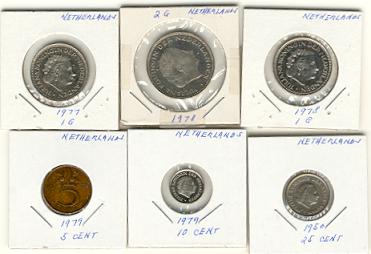
Italy:
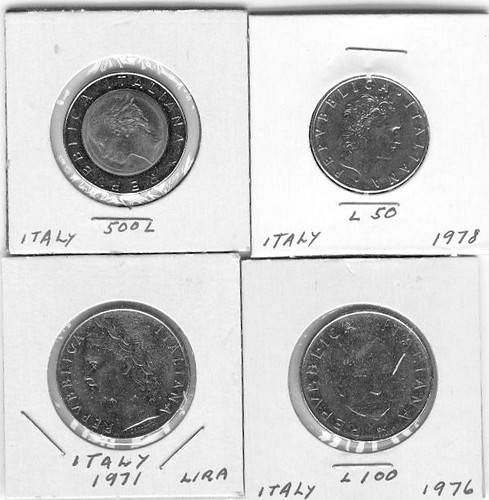
France:
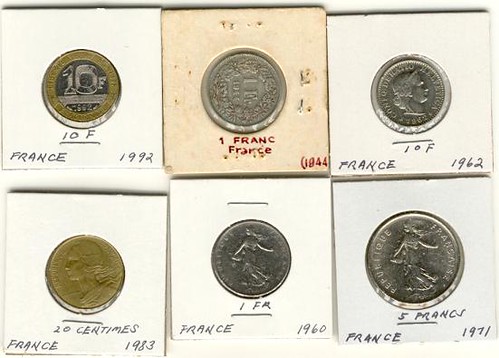
Ireland:
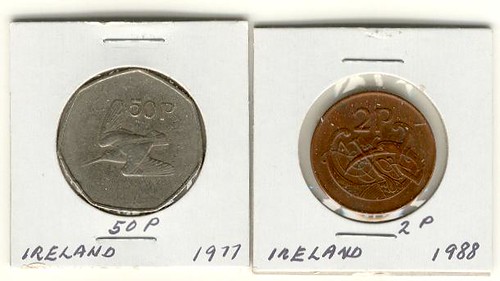
Austria:
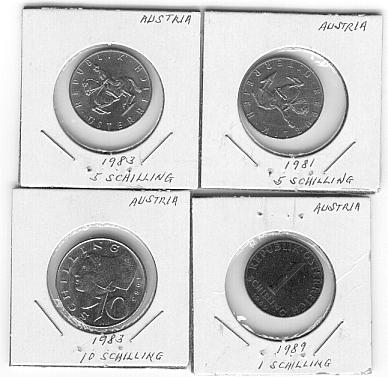
2 comments:
Hi Tatoy -
You are an intelligent, smart person, no doubt about it - with so many diverse interests - from stamp & coin collecting to playing the harmonica, and now back to your old passion, comic book collecting.
I think that's what keeps you young - physically, emotionally, mentally.
It's funny but I was just thinking the other day about going back to school after "retirement - maybe take some English subjects or history or whatever. Or maybe finish the MPA course that I took just prior to emigrating here.
And about your habit of keeping journals, I am that way too. I like to write down my thoughts (though not on a daily basis), or phrases or words that I feel I should remember & perhaps, use someday.
My daughter, Gretchen, is also a stamp & coin collector. I am also a collector of sorts - shot glasses of cities/countries that I visit, amber glassware, etc.
And, I plan to take piano lessons when I go back to Cdo to retire - that is still in the distant future. My daughter, Margie, now takes piano, golf, cupcake & cookie decorating lessons. Oh, and other daughter, Gretchen & I are also now in scrapbooking. I am starting to gather pictures so I can group them effectively under major headings - Family, Friends - HS & College classmates, Work friends (BPI, PNB, SCC), Norcal Cagayanons, Tapoks, Relatives - w/ pages devoted to old pictures, and current ones . . . .
The only problem with having so many interests is that they are all time consuming - of which I don't have the luxury of, yet (time, that is).
Keep on blogging and collecting and singing and learning !
Wendy
Hi, Wendy:
First, thanks for visiting. And I will assume that your children's interests and knack for collecting may also have originated from you.
I myself feel compulsively driven to pursue what strikes my fancies and in the process, find time running out on me. Thus, at times I feel I can never have enough time to engage in the usual activities "normal" people usually are able to allocate.
Re continuing schooling, I have it here written among the "To Do's" in CDO, to finish my MA-Econ or maybe, an MBA. Of course, if I get the chance to stay long enough in CDO.
Yes, we should all aim for that elixir of eternal youth - youthful activities.
Post a Comment